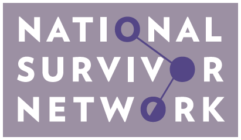January 12, 2023
At the NSN, we draw on and hope to build upon the deep historical legacy of community organizing and grassroots solidarity. Following is a resource on the role of the organizer, by Mike Miller. Mike Miller is a 60 year veteran community organizer working in the tradition of Saul Alinsky, for whom he was a project director, and the Deep South organizing of the Student Nonviolent Coordinating Committee, on whose staff he served for five years. He has initiated neighborhood, city- and state-wide organizing projects, and consulted widely with individual membership, coalition, issue- and institution-based community organizations and their sponsor committees, and with labor, women’s, minority, senior and other groups.
The Role of the Organizer
Written by Mike Miller for ORGANIZE Training Center in San Francisco
Original link from California Historical Society
OTC has a particular understanding of the role of the organizer. In our use of the term, an “organizer” is one who assists people to build a powerful, democratic organization. Because of our own values, we choose to work only with people and organizations who are building organizations which will make a contribution to social, economic and environmental justice.
The organizer accomplishes his or her work by applying these basic concepts:
Active, emphathic listening. By sharing her life story (emphasizing those points from which a concern for justice and a desire to challenge the abuse of power arise) with others, and learning theirs; by asking probing questions which seek to reveal a person’s hopes , dreams, frustrations and fears as well as the day-to-day problems faced at the workplace and community. By demonstrating a real interest in the person with whom she is meeting, the organizer is able to begin a relationship based on common values and shared stories.
Challenging or agitating. The organizer seeks to pierce rationalizations for inaction and claims of helpless victimhood. He connects inaction with the persistence of problems. He is a hope-peddler who can paint the picture of something better, who can present a believable vision of an alternative to the status quo. He also connects deeply held values and beliefs to the necessity for action in behalf of justice. To paraphrase Saul Alinsky, he “rubs raw the wounds of exploitation to the point of action.”
Thinking through. People often don’t act because they don’t see a realistic path of action. The organizer thinks through with those with whom she works the possibilities for action, the strategy and tactics to get from where we are closer to where we want to be, the uses of action to build the power of the people to continue to democratically act in their own behalf.
Training. The other major activity of the organizer is training people who want to act how to do so in the most effective ways. At the heart of this training is the goal of increasing the self-confidence and civic competence of those with whom the organizer works. Among skills an organizer transfers to those with whom she work are: researching an issue; conducting effective one-on-one meetings with members or constituents who might become active in an organizing effort; planning, conducting and evaluating meetings; negotiating with institutional decision-makers, typically in government and business; planning and implementing effective public campaigns on issues; using reflection to connect action to people’s deepest beliefs; using education to expand people’s understanding of how the world works.
